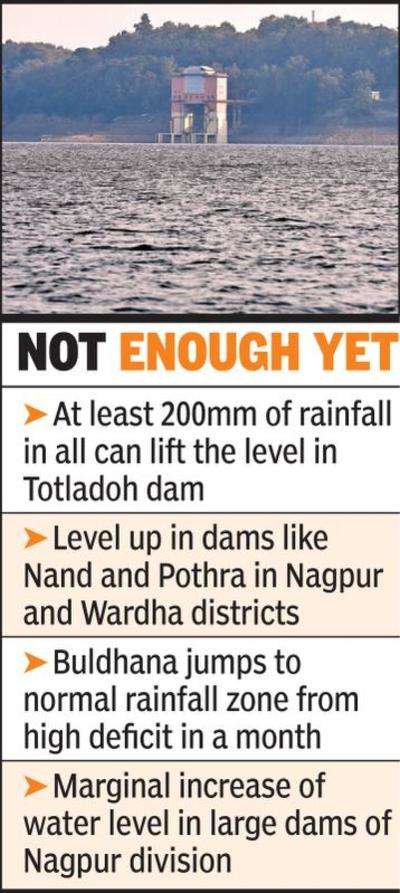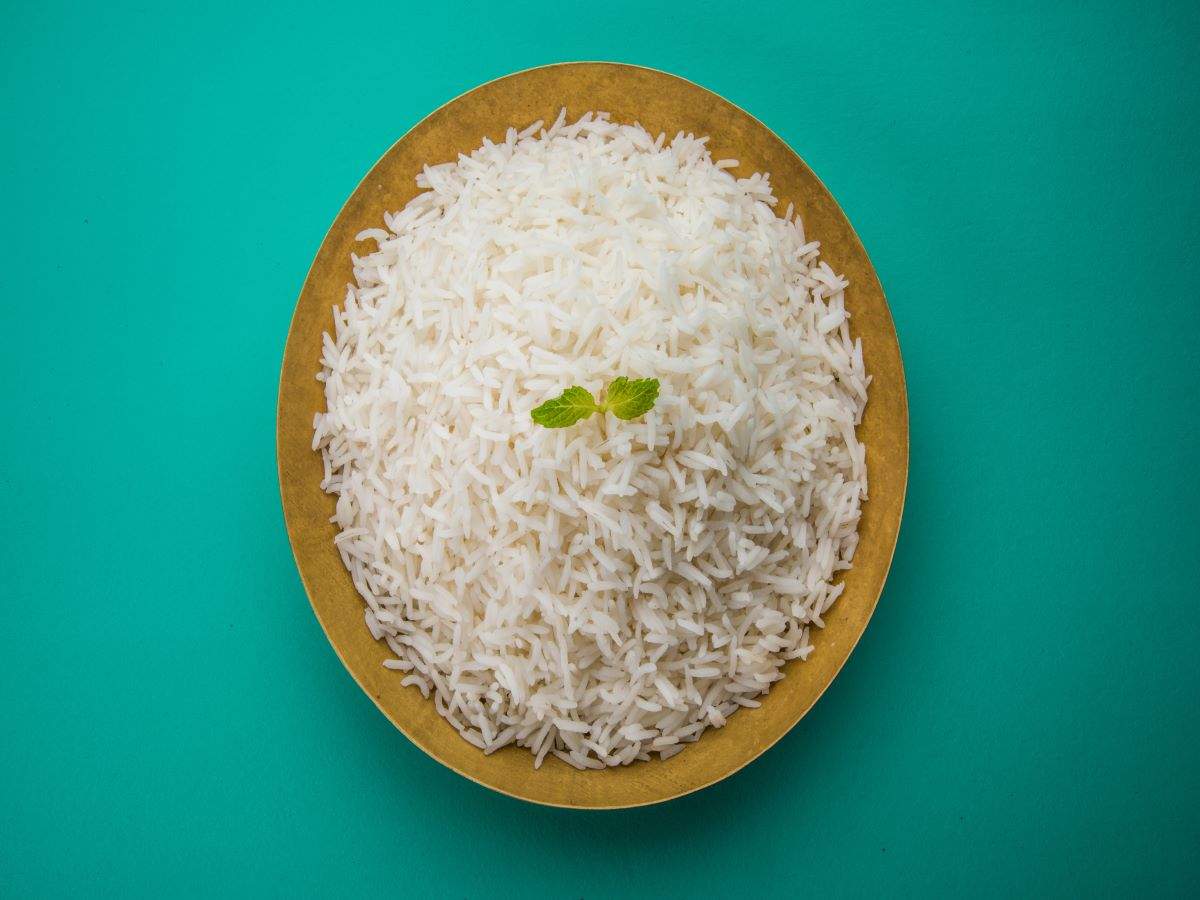
Nagpur: Rains might have brought much-needed respite from heat, but more is needed to tide over the water crisis.
The catchment area of Totladoh, the main dam which feeds the city, has received 111mm of rainfall so far. This is not enough to even take water level out of the dam’s dead storage. Even the level in Gosikhurd dam, the biggest irrigation project of the region, has not come out of dead storage yet. The catchment area of Gosikhurd has received only 79mm rainfall since June.
Dead storage means the level below the dam’s gate from where water can be only lifted through pumps. Or in other words, using dead storage is like scrapping the bottom. Totladoh dam is left with around 85 million cubic meters (MCM) water in the dead storage.
Officials in Vidarbha Irrigation Development Corporation (VIDC) said it needs at least another 100mm of rainfall in the catchment area for the level in Totladoh dam to rise above the dead storage. The summers have been exceptionally dry due to which rain water has been easily absorbed in the soil. “It can only make a difference after another 100mm of downpour,” said a senior official in the VIDC.
Better rainfall in the catchment area of other dams like Lower Nand, also in Nagpur district, has helped the levels inch up above the dead storage. The level at Lower Nand touched up to 5.35% of the total capacity as compared to dead storage a week ago. However, this could happen after the area got over 220mm rain from June to July. On Tuesday alone, 50mm rainfall was recorded here. There has been a similar rise in Pothra, a major dam in Wardha district, too.
The total level in 18 major dams of Nagpur division has only gone up marginally by 30 MCM. The situation is comparatively better in Amravati division which covers Western Vidarbha.
Buldhana, the worst-affected district due to drought, is now in the green zone of regional meteorological department’s rainfall map. The green zone includes areas that have received normal rainfall. According to the met department, normal rainfall is that within 19% below or above the benchmark level.
Buldhana has now received rains up to 89% of the normal average. A month ago, Buldhana was in the yellow zone which defines a high deficit area. Other drought-hit districts like Aurangabad, Osmanabad and Dhule too are now in the green zone.
The catchment area of Totladoh, the main dam which feeds the city, has received 111mm of rainfall so far. This is not enough to even take water level out of the dam’s dead storage. Even the level in Gosikhurd dam, the biggest irrigation project of the region, has not come out of dead storage yet. The catchment area of Gosikhurd has received only 79mm rainfall since June.
Dead storage means the level below the dam’s gate from where water can be only lifted through pumps. Or in other words, using dead storage is like scrapping the bottom. Totladoh dam is left with around 85 million cubic meters (MCM) water in the dead storage.
Officials in Vidarbha Irrigation Development Corporation (VIDC) said it needs at least another 100mm of rainfall in the catchment area for the level in Totladoh dam to rise above the dead storage. The summers have been exceptionally dry due to which rain water has been easily absorbed in the soil. “It can only make a difference after another 100mm of downpour,” said a senior official in the VIDC.
Better rainfall in the catchment area of other dams like Lower Nand, also in Nagpur district, has helped the levels inch up above the dead storage. The level at Lower Nand touched up to 5.35% of the total capacity as compared to dead storage a week ago. However, this could happen after the area got over 220mm rain from June to July. On Tuesday alone, 50mm rainfall was recorded here. There has been a similar rise in Pothra, a major dam in Wardha district, too.
The total level in 18 major dams of Nagpur division has only gone up marginally by 30 MCM. The situation is comparatively better in Amravati division which covers Western Vidarbha.
Buldhana, the worst-affected district due to drought, is now in the green zone of regional meteorological department’s rainfall map. The green zone includes areas that have received normal rainfall. According to the met department, normal rainfall is that within 19% below or above the benchmark level.
Buldhana has now received rains up to 89% of the normal average. A month ago, Buldhana was in the yellow zone which defines a high deficit area. Other drought-hit districts like Aurangabad, Osmanabad and Dhule too are now in the green zone.
Quick Links
Lok Sabha Election Schedule 2019Lok Sabha Election NewsDelhi Capitals teamMI team 2019Rajasthan Royals 2019RCB team 2019Maharashtra Lok Sabha ConstituenciesBJP Candidate ListBJP List 2019 TamilnaduShiv Sena List 2019AP BJP List 2019Mamata BanerjeeBJP List 2019 MaharashtraPriyanka GandhiBJP List 2019 KarnatakaAMMK Candidate List 2019BJP List 2019 WBLok Sabha Elections in Tamil NaduBSP List 2019 UPNews in TamilLok Sabha Poll 2019Satta Matka 2018PM ModiMahagathbandhanNagpur BJP Candidate ListChandrababu NaiduTamil Nadu ElectionsUrmila MatondkarNews in TeluguMadras High CourtTejashwi YadavArvind KejriwalTejasvi SuryaPawan KalyanArvind KejriwalYogi AdityanathJaya PradaSatta King 2019Srinagar encounter
Get the app







